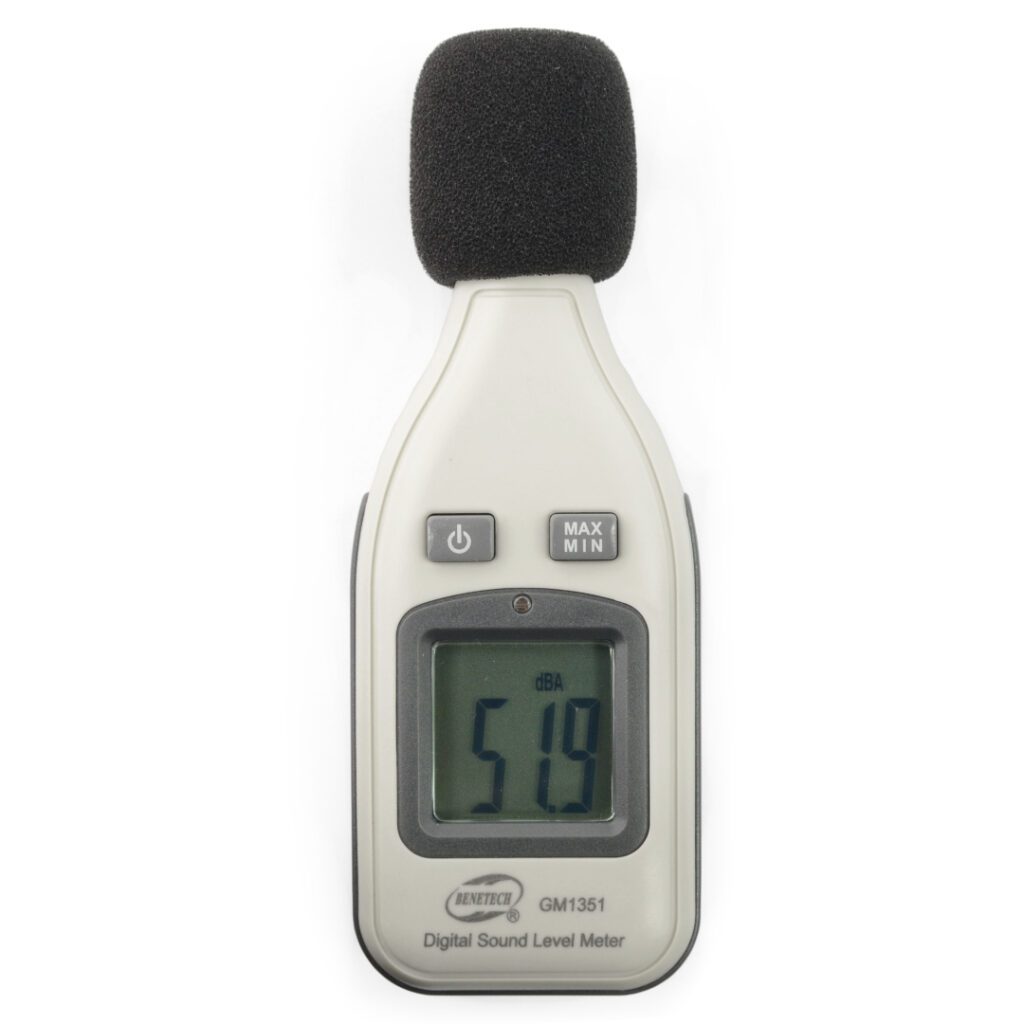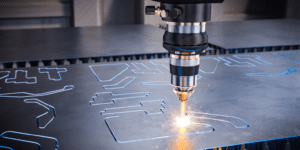Spis treści:
Measuring sound levels and sound pressure is an important aspect of monitoring the sound environment in many different fields. They are used by various industries, environmental protection, sound engineering and medicine. We mainly associate it with measurement in decibels (dB), which determine the level of sound intensity. As a rough guide, this is often described situationally:
- Whisper: 30 dB
- Normal conversation: 60 dB
- The usual noise level in a large city: 55 – 65 dB
- Lawn mower: 90 dB
- Movie in the theater: 80-100 dB
- Live music: 100-115 dB
Sound measurements and sonometers
The indicated harmful limit for hearing is 85 dB. Louder sounds, such as those emitted from motorcycle exhausts, are often grounds for fines, as some of us have painfully learned. Many countries set standards for acceptable sound levels in various environments to protect public health and the environment. This, however, is rather circular knowledge, and it turns out, however, that in more specialized measurements much more sound parameters are paid attention to.
And so sound pressure is a measure of the mechanical effects of a sound wave expressed in pascals (Pa) or micropascals (μPa). Sound pressure refers to pressure changes in a medium that are caused by sound waves. In practice, for sound waves propagating in gases, sound pressure refers to changes in atmospheric pressure due to changes in air density. This is where we come to the aid of
sonometers
.
How does the sonometer work?
Sonometers
are devices used to measure sound levels. The sonometer includes a microphone to capture sound, a transducer to convert the acoustic signal to electrical, and electronics to process and display the results. They are an absolute must-have in monitoring machine noise, in environmental protection for assessing the impact of noise on ecosystems, or in scientific research for analyzing the acoustic characteristics of different areas. Step by step it works like this:
- The microphone “collects” the vibrations of air molecules (sound waves) for conversion into an electrical signal. A transmitter is needed for this.
- The transducer converts the acoustic signal from the microphone into an electrical signal that can be further processed by the sonometer’s electronics. It can be a microphone capsule, in which a vibrating diaphragm generates changes in the magnetic field, which induces an electric current.
- Electronic circuits process the electrical signal from the microphone by performing operations such as signal amplification, filtering and processing in the time or frequency domain. They are necessary to adjust and shape the signal so that it can be properly interpreted and used to measure sound levels.
- The sound level meter reads the processed signal and presents the results in units of decibels (dB).
- Separately: the sonometer calibrator regularly checks the accuracy of the measurements, while the power supply is provided by batteries or other energy sources.
Let’s stop at point 3. These electronics include an operational amplifier to tune the microphone signal level, circuitry to filter out noise and to focus on specific frequency bands, and analog-to-digital converters (ADCs), which are important when the sonometer has digital recording capabilities. One could also mention a signal processor for advanced audio signal processing, such as spectrum analysis, and user interface elements that vary from model to model, but essentially mean similar elements such as clear circuits that display measurement results.
Everyday Sonometers
Perhaps the closest sphere to widespread use is industry and health and safety. Prolonged exposure to high sound levels can lead to permanent hearing damage, such as hearing loss or tinnitus. Workers exposed to noise without proper hearing protection are susceptible to such conditions. Excessive noise contributes to occupational accidents, affects workers’ ability to focus attention and respond quickly to emergencies. Existing regulations in line with European Union directives in this area require employers to monitor noise levels, assess the risks of exposure and take measures to reduce that exposure, such as providing hearing protection tools.
In large urban areas, sonometers are used to monitor overall noise levels in various areas of the city. This helps identify areas that may require action to improve the quality of the sound environment. Combined with our favorite Arduino and Raspberry Pi platforms, interactive art projects, home applications close to smart home and basing the operation of lighting or ventilation precisely on the basis of noise levels, or educational projects are becoming increasingly popular, making it much easier to enter the world of programming and data analysis.
Sonometer - what to pay attention to?
There are no devices free of limitations and defects. The factors to look out for are mainly calibration and accuracy, without which there are no precise results. Sonometers are sometimes susceptible to interference from the environment, such as sounds from other sources or the influence of wind, and from here they are also close to false readings. An important parameter is frequency response, which means that the sonometer is more sensitive to certain sound frequency ranges than to others. Use the sonometer as much as possible, limiting interaction with other equipment (not part of a common design, of course) and try to eliminate vibrations and mechanical oscillations. You can achieve this through stable mounting, mechanical isolation or anti-vibration stands known from recording studios and laboratories. Special algorithms and tools in advanced sonometers are also being developed to help correct measurement results.
How useful was this post?
Click on a star to rate it!
Average rating 0 / 5. Vote count: 0
No votes so far! Be the first to rate this post.






